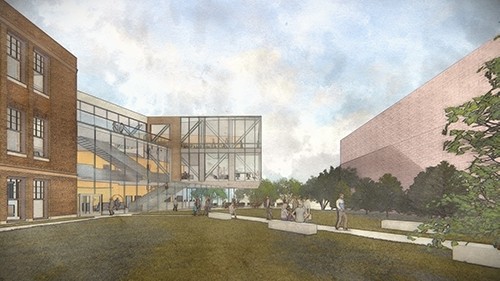University of Minnesota’s Institute of Child Development is asking for state support to live up to its No. 1 program ranking.
As part of its 2019 capital bonding request, the University is asking for $28 million for renovations to the ICD. Faculty say the space is unsuitable for top programs, citing a lack of research and administrative space. State lawmakers have voiced support of the project, but its future is uncertain in a budget year.
The ICD currently hosts the No. 1 child psychology and brain development program in the country, according to U.S. News and World Report 2018. But the building does not reflect that, said Rayla Allison, chief of operations in the College of Education and Human Development and leader of the project. She noted a 2009 external review, which deemed the space inadequate for the nation’s leading program.
“There’s not enough space, for all aspects of the programming, whether it’s office space [or] laboratory space. There’s no classroom in it, there’s no community outreach space — our labs, you might be able to get two people in,” Allison said.
Allison said these limitations impact the program’s ability to maintain top researchers.
Jed Elison, an associate professor who conducts research on autism detection and identification, said a new building could change the way he works with other researchers on campus.
“One challenge that we face is that my team is kind of spread all around campus, and so with support from the Legislature and the new building, that would allow my team to kind of be in a centralized place that would improve communication and efficiency and our effectiveness at executing the research that we’re doing,” he said.
The building was constructed in two parts, with one section completed in 1913 and another in 1967. Allison said these two sections make the building difficult to navigate. The 1913 portion of the building will be “gutted” and renovated while the 1967 addition will be torn down completely.
The reconstruction will add about 30,000 square feet to the building. The project, which has completed the pre-design stage, is currently waiting on the University’s capital request before it can move onto the design phase. The design phase is slated for completion in 2020 with an anticipated opening in spring or summer of 2022, according to Allison.
The project will total $42 million, with the state request accounting for about two-thirds of the cost. A private donation announced in January will account for $8 million of the University’s $14 million contribution.
“When [the donors] stepped up to make this design, it signifies that … the capital campaign is well on its way and that it is a purpose that is important to the University,” Allison said.
While state lawmakers said they feel early childhood education and development is a priority in the Legislature, a bonding bill may not pass this session. Bonding bills are traditionally passed in even-numbered years, although the state has passed smaller bonding bills during odd years in the past. Odd years are dedicated to allocating the state’s biennial budget.
Sen. Greg Clausen, DFL-Apple Valley, said while he’s not sure of the project’s future in a budget year, early education is an area the state needs to invest in.
“We say, ‘well this year we can fund your top four priorities, or your top two priorities.’ It all depends upon the size of that bonding bill and this year if there is going to be a bonding bill,” he said.
Rep. Connie Bernardy, DFL-New Brighton, said despite not knowing where the ICD project will land in terms of legislative priorities, she knows early childhood is important for her and her fellow caucus members.
“I know there’s a value of early childhood in our caucus so it would seem like it would have a good opportunity to gain support and move forward, but in isolation I can’t tell you where it fits in the other priorities,” she said.

















